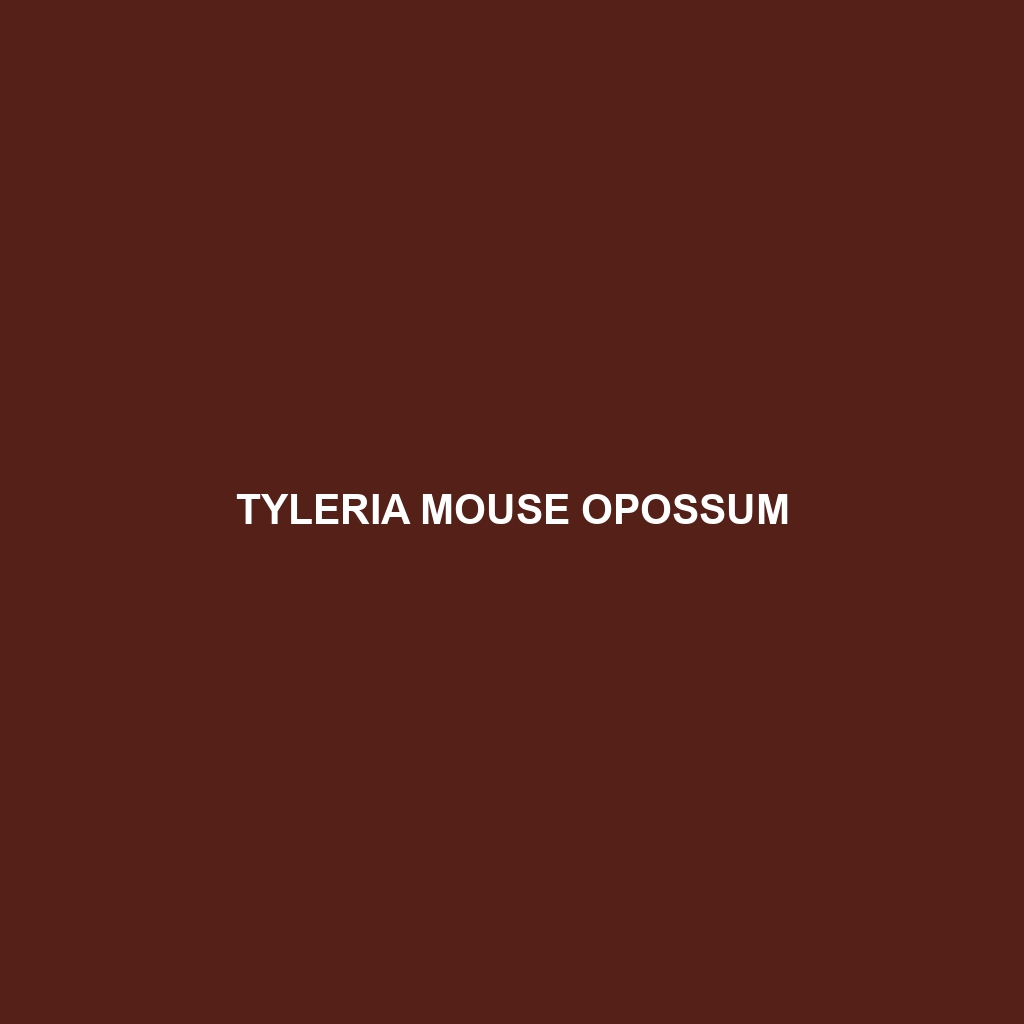Tyleria Mouse Opossum: A Detailed Overview
The Tyleria Mouse Opossum, scientifically known as Marmosops tyleriana, is a small, nocturnal marsupial native to the lush rainforests of South America. This elusive creature is known for its dexterous climbing abilities and its role as both predator and prey within its ecosystem. Despite its diminutive size, the Tyleria Mouse Opossum plays a significant role in the biodiversity of its habitat.
Physical Characteristics
Size: The Tyleria Mouse Opossum typically measures around 10-15 centimeters in body length, with a tail that can be nearly as long or slightly longer, adding another 12-16 centimeters.
Coloration: This opossum exhibits a varying coat color, generally ranging from a soft gray to a brownish hue, which provides excellent camouflage against the forest floor and tree bark. The underbelly is often a lighter shade, sometimes white or cream.
Special Features: One of the most distinctive features of the Tyleria Mouse Opossum is its prehensile tail, which it uses adeptly for climbing and maintaining balance. Its large, dark eyes are well-adapted for night vision, and it possesses sharp claws that aid in gripping and climbing.
Behaviors
Social Interactions: The Tyleria Mouse Opossum is largely solitary, coming together primarily during the breeding season. They are known for their territorial nature and will often use vocalizations and scent markings to communicate and establish boundaries.
Feeding Habits: As omnivores, these opossums have a varied diet that includes insects, small invertebrates, fruits, and occasionally small vertebrates. Their diet helps control insect populations and aids in seed dispersal.
Ecological Roles: This species plays a dual ecological role as both predator and prey. They help regulate insect populations and, through their consumption of fruits, contribute to seed dispersal, supporting forest regeneration.
Habitats
Natural Habitat: The Tyleria Mouse Opossum is primarily found in the tropical rainforests of northern South America, particularly in regions such as the Amazon Basin. They favor dense, humid, and elevated environments where they can easily navigate the treetops and undergrowth.
Adaptations: These opossums have developed several adaptations to thrive in their arboreal habitat, including their prehensile tail, sharp claws, and acute night vision. Their coloration also provides excellent camouflage against predators.
Conservation Status
Current Status: The conservation status of the Tyleria Mouse Opossum is currently not well-documented due to its elusive nature and the vast, often inaccessible habitats it occupies. However, like many rainforest species, it is likely impacted by deforestation and habitat fragmentation.
Conservation Efforts: Efforts to conserve the Tyleria Mouse Opossum include protecting large swathes of rainforest through the establishment of national parks and reserves. Research into their specific habitat requirements and population numbers is also crucial for developing effective conservation strategies.
Fun Facts
Marsupial Mothers: Female Tyleria Mouse Opossums have a pouch where they carry and nurse their young, much like their larger marsupial relatives. This ensures the young are protected and can develop in a secure environment.
Nocturnal Navigators: These opossums are most active at night, using their heightened senses of smell and sight to forage and avoid predators under the cover of darkness.
Climbers Extraordinaire: With their prehensile tails and strong limbs, Tyleria Mouse Opossums are exceptional climbers, capable of navigating the complex forest canopy with ease.
By understanding and appreciating the unique attributes and ecological significance of the Tyleria Mouse Opossum, we can better advocate for the conservation of these fascinating creatures and their vital rainforest habitats.
